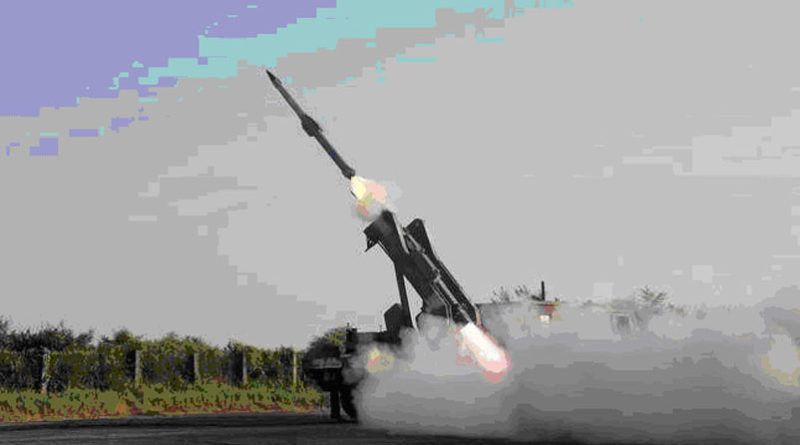India Successfully Test-Fires Quick Reaction Surface-To-Air Missiles Off Odisha Coast
13 Nov 2020
According to the Defence Ministry, Quick Reaction Surface-to-Air Missile (QRSAM) system were successfully test-fired at an integrated test range of around 30 kilometres in Chandipur off the Odisha coast on Friday.
By directly hitting a pilotless target aircraft (PTA) at medium range and medium altitude, the QRSAM system has achieved a major milestone. The state-of-the-art missile was launched from the Integrated Test Range (ITR) at Chandipur in Odisha’s Balasore at 3.50 pm.
“The successful test-firing of the QRSAM paves the way for its commercial production. The system has achieved a major milestone by a direct hit on a Banshee pilotless target aircraft at medium range and medium altitudes,” it said in a statement.
Can detect, track targets on the move
The system is capable of detecting and tracking targets on the move and engaging targets with short halts. It is designed to give air defence coverage for strike columns of the Indian Army. “The missile is propelled by a single-stage solid propellant rocket motor and uses all indigenous subsystems… It is capable of detecting and tracking targets on the move and engaging targets with short halts. The system is designed to give air defence coverage against strike columns of Indian Army,” the ministry said.
Propelled by a single stage solid propellant rocket motor, the sophisticated missile used all indigenous subsystems. It is canisterised for transportation and launch using a mobile launcher which is capable of carrying six canisterised missiles.
All QRSAM weapon system elements like battery multifunction radar, battery surveillance radar, battery command post vehicle and mobile launcher were deployed in the flight test. The radar tracked the target — Banshee PTA — from the farthest range and the missile was launched when the target was within kill zone and achieved the direct hit with terminal active homing by RF seeker guidance, according to the statement.
Various laboratories of Defence Research and Development Organisation (DRDO) such as DRDL, RCI, LRDE, R&DE(E), IRDE and ITR participated in the test. The weapon system elements have been realised through defence PSUs BEL, BDL and private industry L&T.
The missile system is fully indigenous with active RF Seekers, Electro Mechanical Actuation (EMA) systems sourced from various industries. The radar is a four walled active phased Array radar. All range tracking stations, radar, EOTs and telemetry stations monitored the flight parameters.
Defence minister Rajnath Singhm, and Defence Research and Development Organisation (DRDO) chairman G Satheesh Reddy congratulated DRDO scientists on the successful test-firing of the missile. In the last two months, India has test-fired a number of missiles including a new version of the surface-to-surface supersonic cruise missile BrahMos and an anti-radiation missile named Rudram-1.
Courtesy: Opera News/IndiaToday

